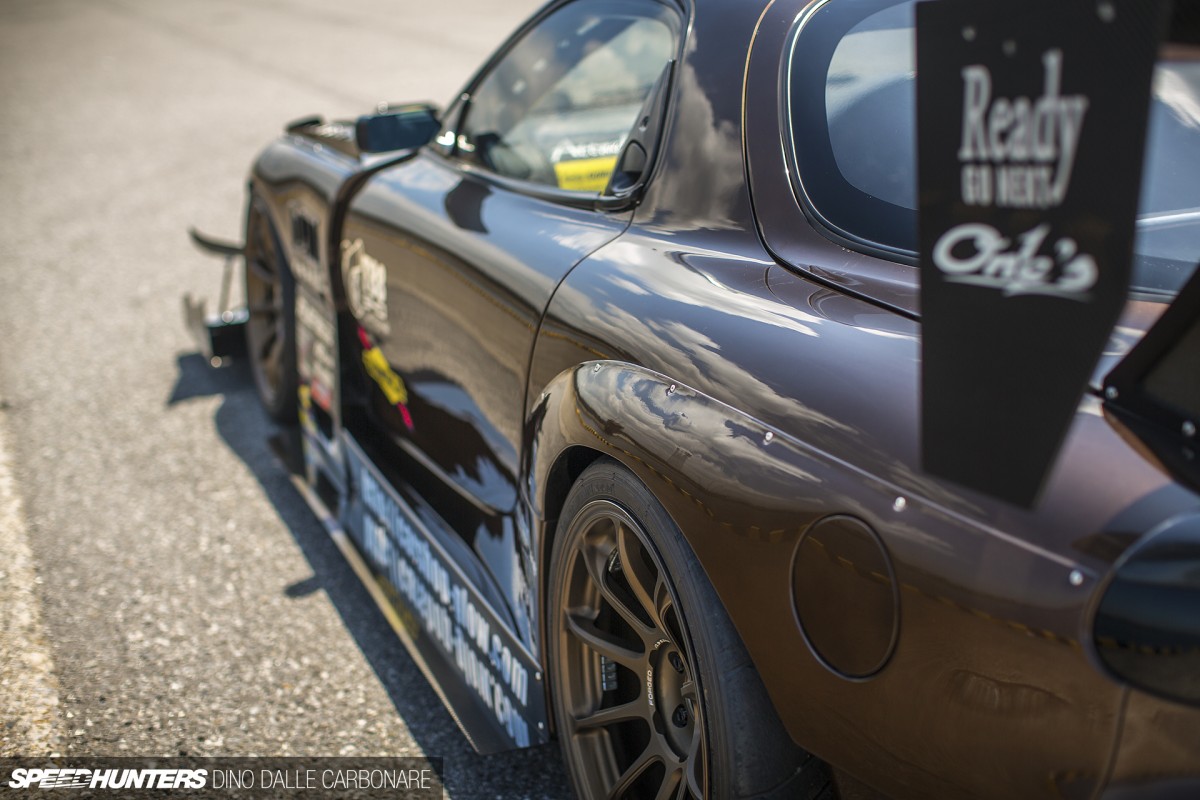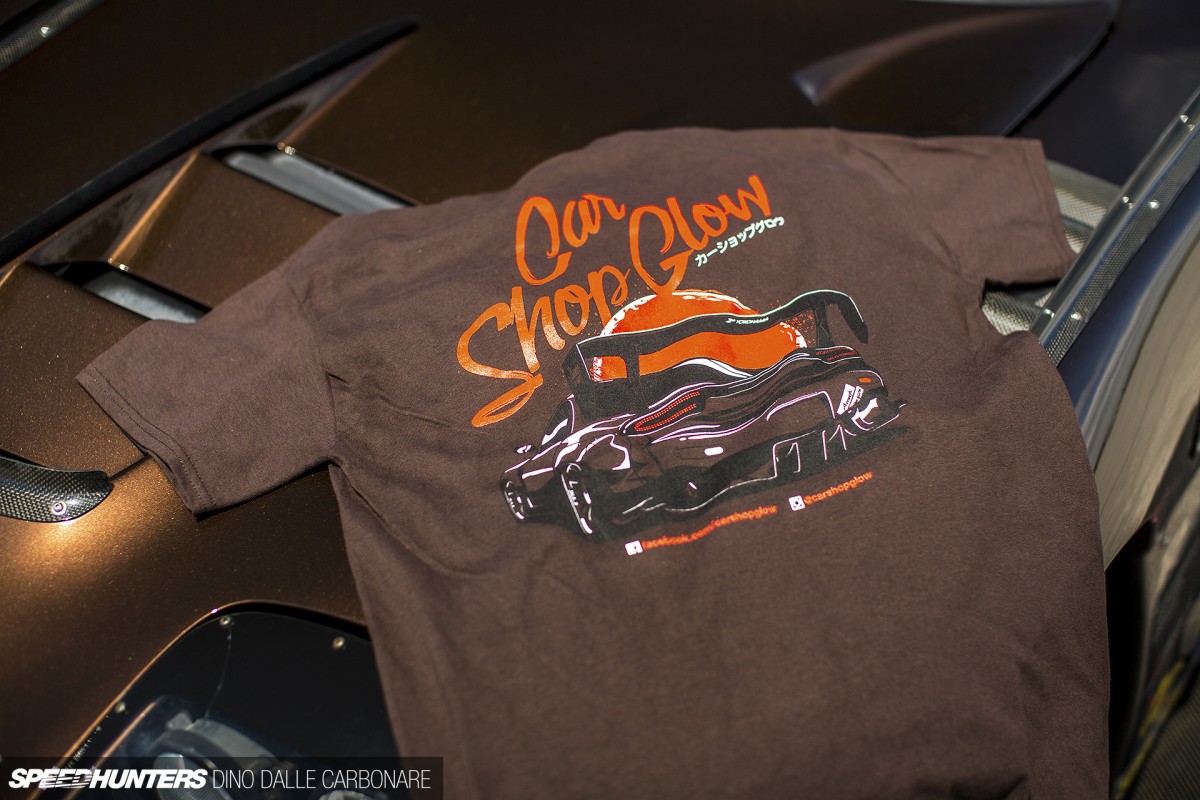This FD3S Mazda RX-7 does not need a lot of the introduction-it’s one of many cars here in Japan that you got in a “photography” list for a very long time.
But finally, after the stars recently aligned, I managed to get the great players in A car store glow (CSG) to bring their time to attack Mazda to a quiet site away from the hustle and bustle of the daily chaos in Tokyo.

I can remember the first time that I put eyes on the RX-7- Perhaps this was the second round that I covered in February 2015, and I sat greatly through the first few rays of the morning light that is broken on the horizon. The dedicated bronze color sparkled and reflected, and I thought immediately, “Curse, 7 looks hot!”

Like all cars involved in Battle Evome, the RX-7 has evolved from CSG over the years, increasing air dynamics to the maximum to the best roll of 56 seconds in the Tsukuba circuit. This is my friends very Quickly – especially given that he is not driven by a professional driver, but rather the man who runs car stores, Yukimitsu Hara.

The most surprising thing is that CSG cannot be classified as a loyalty, as its main works revolve around the LED solutions for cars and lighting ups. However, Hara-SAN loves the race, and the time attack is of particular importance, which led him to convert the RX-7-who was once his car on the street-to something that focuses on the path much more than a friend of the roads.

FD3S may remain equipped with a navigation system, amplifiers and even ETC to pay the highway fees in Japan, but the days they took on Sunday the quick have ended.

Mazda is located on a group of the Aragosta settings designated by Pisto Racing. The suspension links are separated by a rose, and each fuss is replaced with polyurethane rewards or wherever possible, installed on the structure.
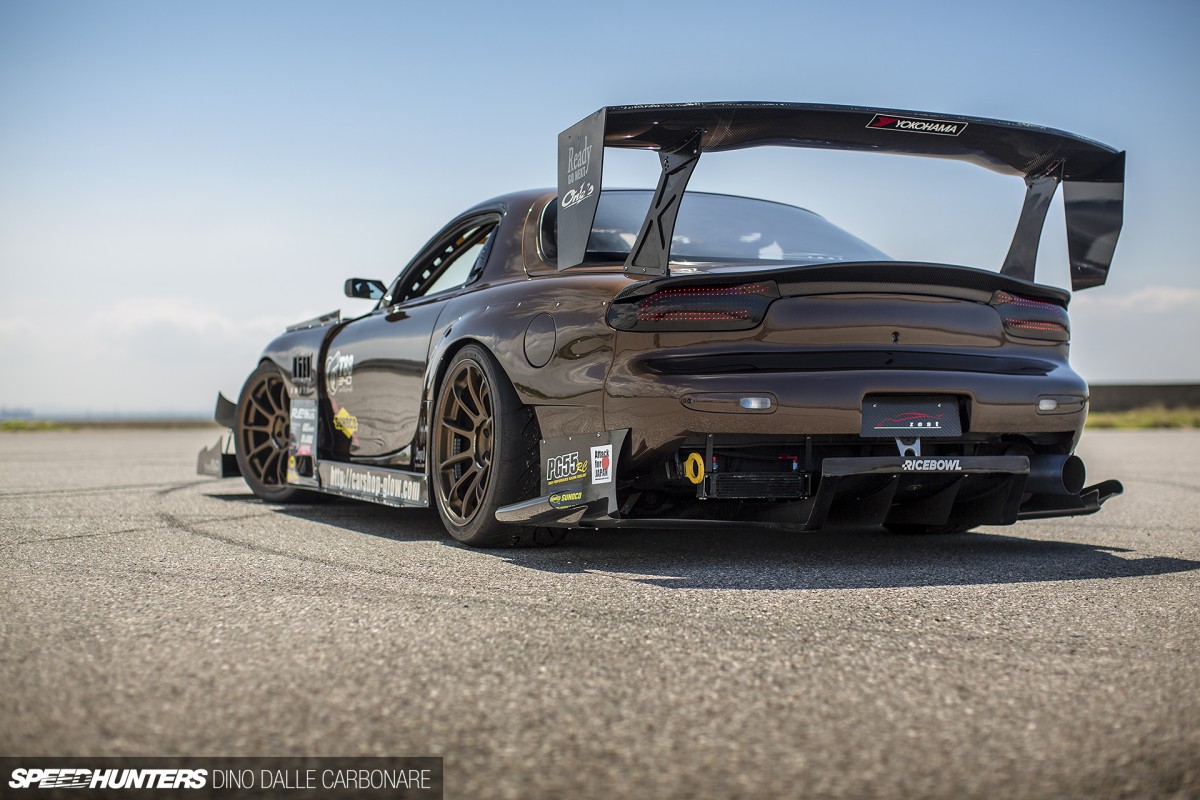
As I indicated a moment ago, the way the RX-7 is refined through the air over the years with a set of promotions that depend on the Body Wide Admiya AD GT tool group already impressive. Everything is implemented beautifully and wonderfully; Car stores are proud of the wet carbon parts they create.

But let’s take a closer look – first, at the forefront where you can easily recognize the Amemiiya bumper thanks to the distinctive central air. Everything else, however, masked through some dangerous air additions.

Large major rocks are covered at each end and joined by a pair of boxes that are reinforced in place with support bars to ensure that the bend is maintained to a minimum. The JDM Time striker cannot be dangerous if he does not trade the side mirrors of a pair of craftsmanship carbon elements, which will immediately change the profile of any car – as you do here. The Amemiiya distributor was modified and joined a pair of bouloma generators, while the CSG carbon wing raises the surface of FD.

All this combines the creation of a concentrated device that lasts existence and requires time to enjoy it completely. The more you look at it, the more details and the small touches I have noticed.

From this angle, for example, it was detonated by the number of air outlets that were worked on the front end. Aero Andrew Brilliant has always told me when trying to explain some of the secrets of the air dynamics (which I usually follow for 30 seconds before dividing the areas), you have to get rid of the air as much as you eat and do so smoothly as possible while using it in your favor. Or something like this anyway! FD’s Front End Thanns Abton is away from the bay of the engine as well as the wheel arches, which were recently provided with side outlets and higher in an attempt to find more frontal lower forces.

The air profile that flows around the car profile must also be managed intelligently, and here, the additional skirts do so completely.

They meet in what is one of the most popular rear benefit of FD-it’s simple, but it adds a lot of impact to the general position of the car. The dessert coating is something that I must also explain – the primary bronze color is actually inspired by a cubic nissan, but there are additional metal chips that are added to make them really emerge.

Finishing things are the fixed Rememiya units in the location of the original headlights and the latest LED units in the Car Glow Store.

Then, of course there are wheels. Until a while, RX-7 used to work on one of my favorite wheels there: Volk Racing Ce28N of the rays. He is now sitting on a group of ze40, which is not only more solid, but also lighter.

Then we reach the brake, and this is something that always makes me a muffled laugh when it comes to the RX-7s. This is a 56-second car in Tsukuba-56.4 seconds to be accurate-however I managed to achieve this time stock The brakes. Well, so the front rounds are higher specifications because they are PFC elements outside the cliff, as well as the front and rear platforms, but this tells you everything you need to know about the race and follow a lightweight car. Good luck running lamp times under 60 seconds in Tsukuba in GT-R with factory plugs!

In the details, I also discovered something similar to another new addition to the back of the car: spoilers of a damping carbon trunk, which draws light on the RX-7 rear lights.
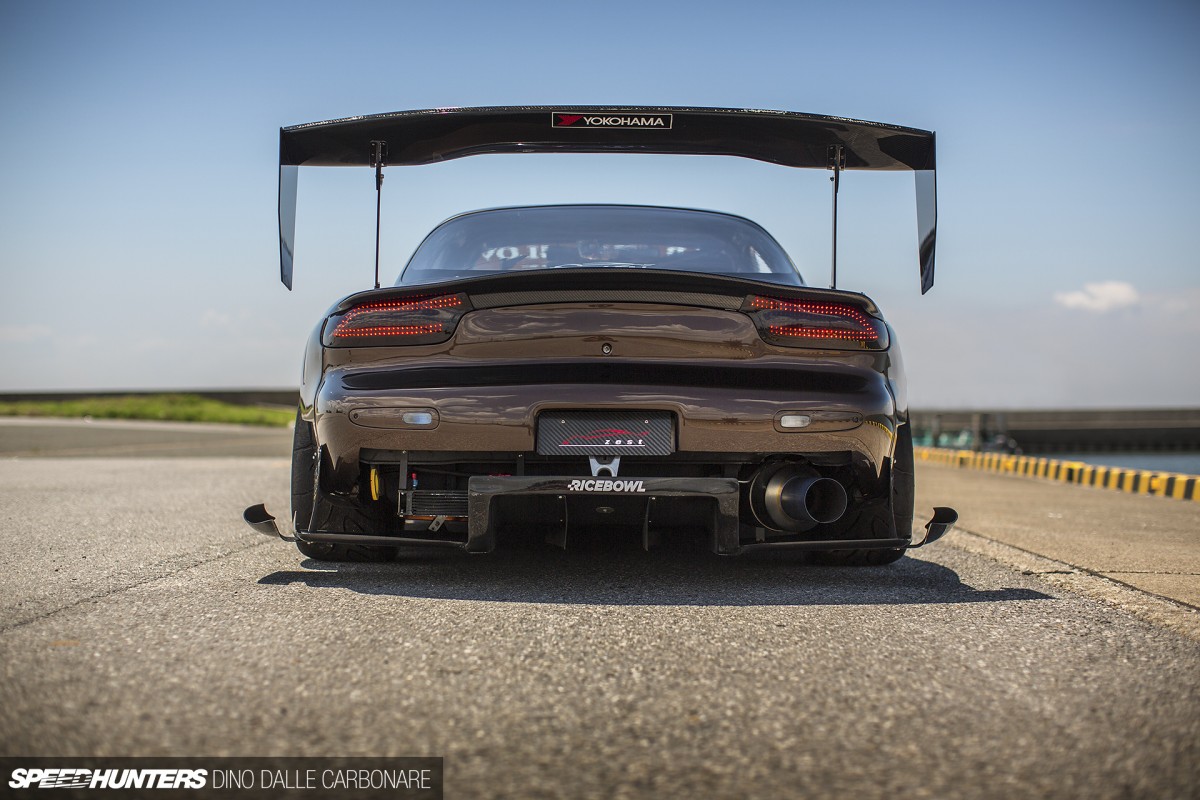
The spotlight contains Inns LED LED, which leads to a unit that acquires a lot of exposure thanks to social media.

Below is another corner for the CSG custom -fiber wing, which features some large paintings. It somewhat reminds me of the wing he did on the R34 GT-R- Just a high-voltage version of it.

As you can see from this image to the RX-7 from the last time I saw it in Tsukuba, the wing is a new addition and something they try to see if it makes an actual difference through the corners.

We have proven to a large extent that this car was able to break the template when it comes to standing in a sea of FDS constantly throwing Japan.

But the thing that makes this RX-7 performance is what it is, it comes out under the hood.

The engine of this type is definitely outside the world of Car Show Glow, which is why they cooperate with the Rotary Zest Racing specialist in Chiba.
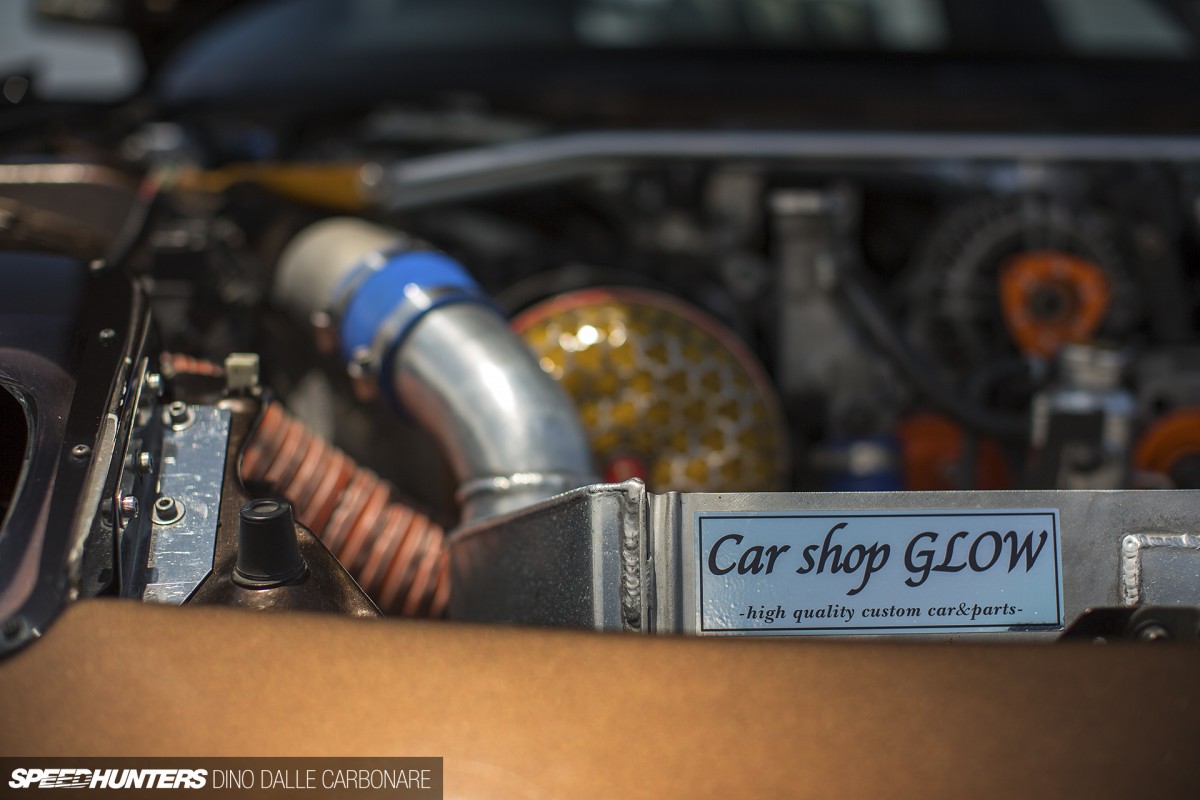
Zest has provided a kind of energy and delivery that a car competes competing at the time specified, so you will not find a monster of three courses developing out of four numbers, but it is 13 B. It has been well manufactured that defines all the correct boxes. The Bridge-Ported engine produces 530 hp partially to the giant TRUST T88-34D charger, but not to nullify the fast nature and the response that the rotating engines are famous, Zest reached the preparation of the V-Mount dedicated to the resource that maintains pipe engines as much as possible. The HKS F-Con V Pro engine system treats fuel and ignition, and is able to extract a 6900-round rotating torque curve of torque.

Zest has also manufactured the titanium exhaust directly with the long sound silencer to wipe the bumper and publisher.

Approach the exhaust port, the flowing air flowing from under the car is used well that works through a small but effective transmission cooler.

Hara-SAN will continue to master FD with its direct goal of breaking the 55-second barrier. This, of course, will never be the end of the matter – it is – because love and attractiveness of time makes you naturally make you want to know how much you can pay things.

No season passes to where the car is not strengthened or developed in one way or another. It is the essence of this discipline, and the vision of people and shops collects this type of machine.

Unlike other countries, the time attack in Japan is still very small. Regardless of the small events on the small track day and magazine sessions organized by titles such as Reverend speed and option, There is nothing like the national chain. This is exactly the reason why no ports or makers of parts with large names, which on one side of the objects are somewhat sad and frustrated, but on the other side this sport remains at the base level at the base level, which helps to make it more private.

There are two aspects of the construction of cars that are left behind by the Japanese and Japanese builders – one of which is engine management solutions, other interior and the structure. As far as the last thing is related, the CSG RX-7 is at another level, which is clear as soon as the door is opened.

The external shells remain metal, but the inner edges are removed and replaced by lightweight carbon cards.

There is a dedicated roll cage that is welded with the structure, besieged and an extension in different locations for more strength and hardness. It really helps in obtaining the maximum benefit from the FD shell, which lacks the side of modern standards on the side of the hardness of things.

The cage runs back behind the Recaro program seat to join the rear stent towers.

It remains only the Dash and Center Stack; Each part of the additional pieces after removing them to expose bare metals. But in the real JDM style, there are some electronic additives in this mixture, including the HKS Boost Control Unit, HKS Circuit Attack Timer and Three A’pexi. You can also see how the dual navigation head unit has been left in place-which is very strange to see in a time attack car, but a reminder of the type of device that was this RX-7 once.
While Mazda has the lights now after hitting Roadster/MIATA/MX-5, the new streets around the world, I hope you will not forget a very special group of distinguished supporters-a rare breast that may not give up their passion for a Wankl engine.

As long as men like Hara-SAN in Car Shop Glow and other roundabouts all over the world continue to show how this timeless classic remains more than related in the world of cars set today, RX-7 will shine for many years to come.
Dino D Carbonar
Instagram: dino_dalle_carbonare

